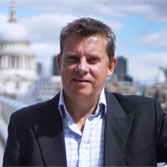Umeå 2014; a small far northern Swedish town rich in Sami heritage and quirky culture

Umeå waterfront. Photo Guillaume de Basly/imagebank.sweden.se
A woman in national costume plopped three lumps of cheese into my coffee and when I asked the reindeer herder his name, he chanted like a Native American for thirty seconds and then said, “but people call me Jorgen”.
I knew I was somewhere strange.
In fact I had landed in one of the two European Capitals of Culture for 2014; a small city of 100,000 people 400 miles north of Stockholm called Umeå. Unheard of outside Sweden, it’s an odd choice for a cultural capital.
The opening ceremony was carried off regardless of this, with a barmy extravaganza on the frozen River Ume. Thousands of locals huddled to see reindeers on ice, illuminated quadcopters performing acrobatics, and heard big-noise Sami singers from Finland, Iceland, and Sweden.
The Sami, by the way, are traditional reindeer herders and Europe’s only indigenous people. They live around Umeå and right across the far north of Scandinavia - a tough and much maligned group who from my short experience in their ancestral homelands bear the fragility of their way of life against the marauding southerners with dignity and warmth.
Anyway, known as the ‘City of Birches’, Umeå has grid-patterned tree-lined streets, planted after a massive fire in 1888. They make up a rebuilt town of uninspiring architecture, except for the pretty church and old prison that survived the fire.

The ladies and gentlemen of the press mirrored in the Bildmuseet. Photo My Bathroom Wall
And then there’s the Bildmuseet a new cube structure just along the waterfront. Inside was a swing in a huge box lined with mirrors by Thilo Frank, a snakeskin mask made by surrealist femme fatal Leonora Fini, and a local Sami artist asking through photography, ‘Can sorrow be inherited?’
Next door I toured one of the world’s leading design academies, part of Umeå University. There were cool desks and workshops, concept model cars and furniture, and an inflated rubber dingy in the corner of one room - marooned purely to ponder in.

Umeå in winter. Photos Guillaume de Basly/imagebank.sweden.se
Importantly though, I needed to find somewhere cheaper than £8 for a small glass of larger where I'd been walloped in the wallet the night before. So asked the students for cheap eats recommendations and was soon sitting in a chalet style restaurant called Dorsken (dorsken.se). Here £8 bagged me a hearty Smörgåsbord of meatballs, poached salmon, salads, cakes, and coffee - phew.
That night was the opening of Guitars, The Museum - a shop, restaurant and music venue with a top floor display of 500 electric guitars amassed by the secretive Åhdén twins. There were no crazy rock and roll stories though, just a name and date on each instrument. “We are interested in the guitars, not in who played them”, said either Samuel or Michael, awkwardly.
Next day I visited the Västerbottens museum. It has boats, reproduced rock paintings, mournful photographs of the Sami’s disappearing way of life, and racks of skis. All the skis looked remarkably similar, even though they dated from 1835 to the 1980’s. Antiques impressive enough for me, till I saw the showcased 5,200 year-old-example.
As for that coffee and singing…
Well, at the Sami cultural Institute there was a talk on Sami way of life, which ended with a warning. “Go visit the reindeer herder outside,” said the host, “but roads and dams are destroying his grazing land and if you ask him about it, he may cry”.

A moving presentation on the Sami the way of life at their cultural centre. Photo My Bathroom Wall
On the way a Sami woman in a richly embroidered tunic offered me coffee and dried reindeer meat, and ‘one lump or two’ in these parts really does refer to cheese. It’s called ‘coffee-cheese’ apparently, and is a new Sami tradition.
Jorgen the reindeer herder didn’t cry, but I nearly did. With snow falling and his animals and two kids behind him, he ‘yoiked’ his name (which is what the chanting of a name or place or emotion is called), and then yoiked his love for his father too.
His guttural evocations are my strongest memories from Umeå – a cultural capital without any hop-on-a-plane must-sees, but with some unexpected rewards.

Jorgen's reindeer in their pen. Photo My Bathroom Wall
Where to eat: Socialize Socialize is a red wooden restaurant by the river, with a cosy cellar room, outdoor decking, and a menu of river fish, reindeer, smoked elk and even bear. The big and bold Rex Bar & Grill Rex Bar & Grill fills the old town hall with a trendy restaurant, bar, and nightclub - local treats include Whitefish Roe Toast, Smoked Arctic Char and Reindeer. Or Droskan is the place for a great value smorgasbord of meatballs, poached salmon, salads and deserts. It’s a couple of minutes stroll from the Bildmuseet, offering an all-you-can-eat lunch in ski chalet like surrounds for £8pp.
Where to stay: the 185-room Comfort Hotel Winn Comfort Hotel Winn is a smart new design-style place. Or the new Stora Hotellet is decorated in nautical themed noir.
 |
Umeå is remote, small and costly to get to, so Umeå isn't going to be a city break destination anytime soon. However, if you are interested in seeing somewhere very different, or in learning more about Sami culture, then it's a good place to start. |
 |
Umeå Airport is five kilometers from the city centre, and handles just over a million passengers in 2016. Flights to and from Stockholm take an hour and are operated by BRA Braathens Regional Airlines, Norwegian, and SAS. There are direct flight to Helsinki too, with Finnair. Alternatively, Ryanair flies from Stansted to Skellefteå (a 90 minute drive from Umea). |
 |
The humid equatorial climate here means temperatures change little across the year - and average around 30°C. There is hardly any rainfal between May and December, which are the best months to visit. The rainy season here is a proper one, with over 120mm of rainfall in each of the wet season months. |
 |
see Umea's stint as host city, 2014, and Visit Umea My Bathroom Wall homepage photo Lola Akinmade Åkerström/imagebank.sweden.se |





